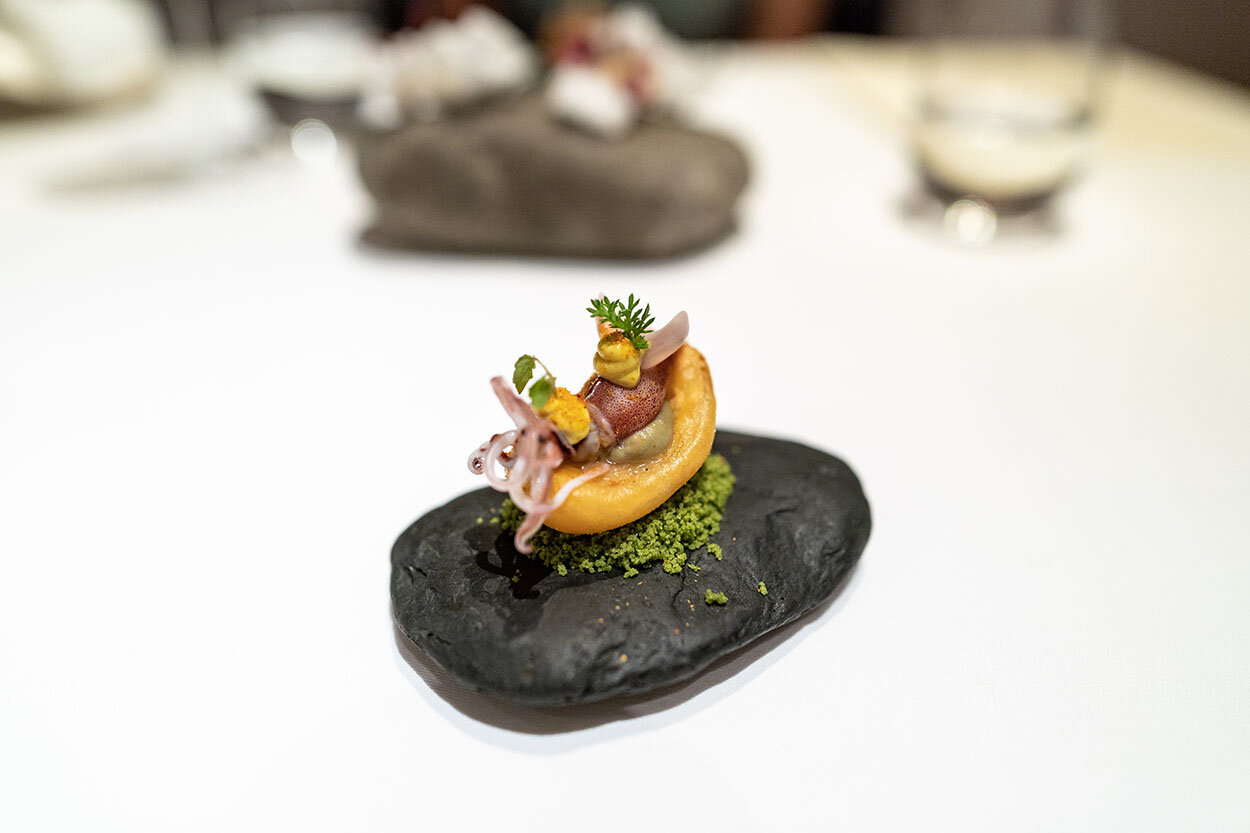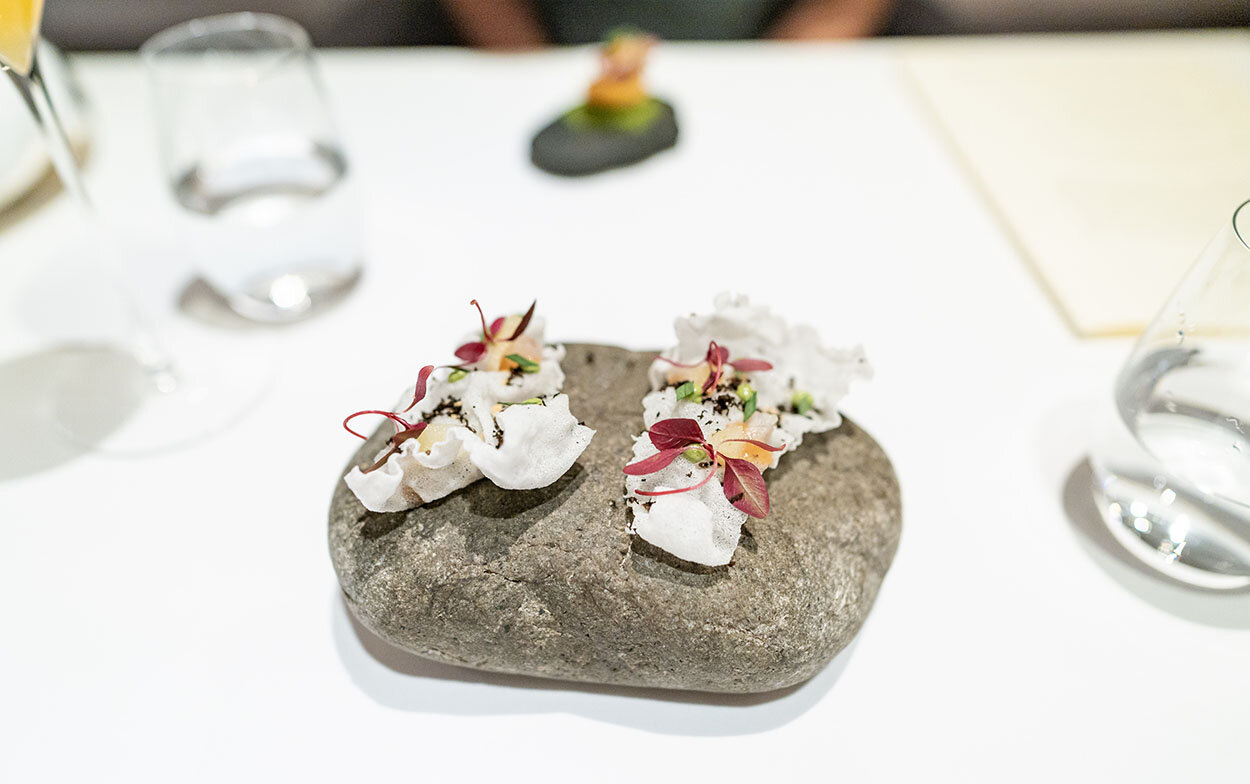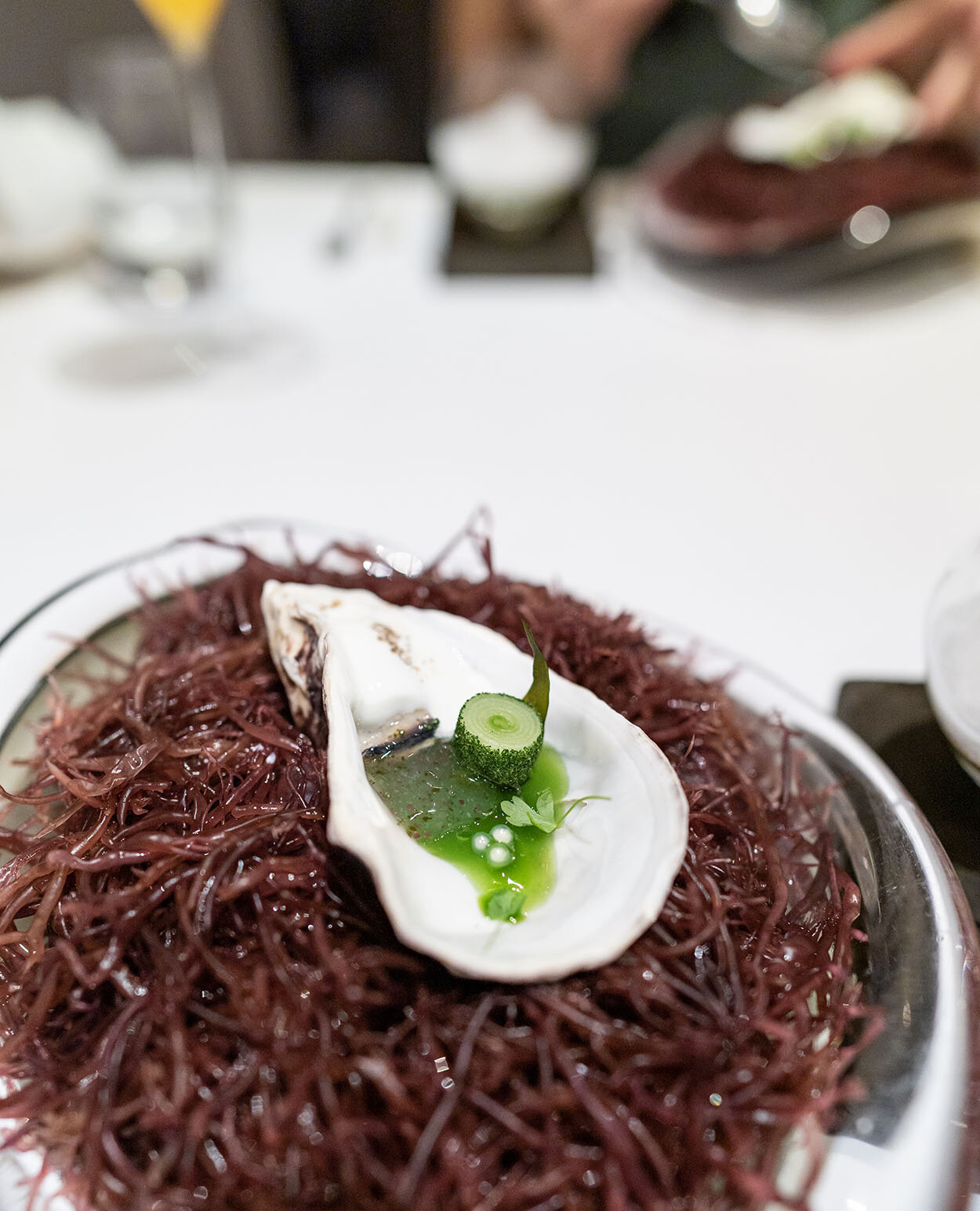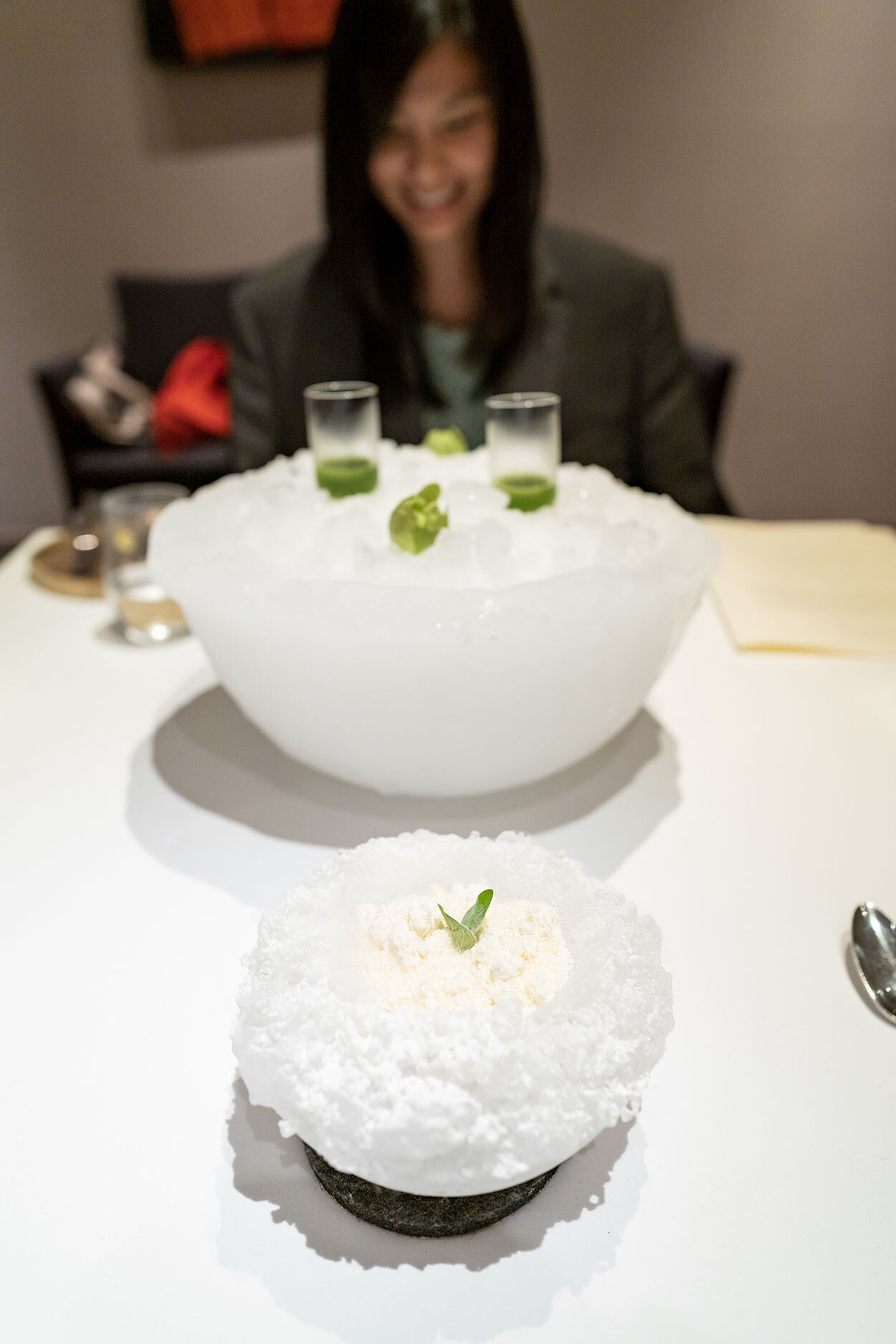Hajime
Cherry Blossoms & Michelin Stars
My recent journey to Japan encompassed two weeks of cherry blossoms, temples, shinkansen, and of course, food. Each time I return to my ancestral homeland, I am astonished at how the food is, almost universally, great. From fine dining to street food, Japan has so much to offer those in search of deliciousness. I plan on recapping some of our more casual eats in a later post, but the focus of today’s musing is anything but casual.
Japan’s significance as a heavyweight in haute cuisine is nothing new. In fact, three of the five cities with the most Michelin stars in the world are in Japan (with Tokyo reigning supreme at #1). This trip took me to all three of these cities, leaving me with no shortage of Michelin-starred restaurants to choose from. While cherry blossom season is a beautiful time to visit Japan, it is also one of the busiest times of the year; more tourists mean more competition for coveted tables. In the months leading up to the trip, I had hotel, VISA, and AMEX concierges working overtime to help me secure reservations.
Curiously one of the most storied restaurants in Osaka was arguably the easiest reservation for me to secure. With just a few email exchanges I was able to book a table a few months in advance at Hajime, one of just a few 3-star Michelin rated restaurants in Osaka.
No Photos?!
While a silly thing to most, one of my initial concerns about dining at Hajime was their public “no photos” policy. This is told to you upon making a reservation and a little reminder card is left on your table when you are seated. So how, you ask, do I have photos of the food? Well it turns out there is some leeway (or a loophole if you will). While I didn’t specifically ask our server why I was allowed to take photos, I can only surmise that the following factors came into play:
I shoot using a Sony a7iii, which has the added benefit of a “silent shooting mode”. This means that there is zero sound when using the camera, not even the little shutter “click” you might normally hear.
Having now taken photos of thousands of dishes, I generally know as soon as the plate hits the table what shot I want to take and how to compose it. Inadvertently this meant I was able to finish taking my shots before the server was able to finish explaining the dish.
Chef’s Tasting
Hajime offers its guests two different menu options: standard and short. As the designations would imply, the short menu has fewer courses and comes at a lower price point. However, it does not include Chikyu, Hajime’s signature dish. Never one to shy away from a full-blown tasting menu I opted for the standard course, which rang in at a wallet-lightening ¥45,360 ($406 USD).
1st Course: Midori (Green) - Asparagus, chickweed, yuzu
Kicking off the menu was a warm custard of asparagus and chickweed. Yuzu brightens each spoonful as the custard envelopes the savory receptors of the palate. There’s a hint of umami there as well, helping to awaken your taste buds for the coming meal.
Texturally contrasted with the first course, the next two bites were served upon crunchy vessels. An almost shrimp-chip like kue topped with herring roe packs a salty oiliness, with a hint of oceanic brine. Firefly squid, a seasonal ingredient during this time of year, sits atop a crunch fried potato. The squid, taken as one bite, bursts with flavor. The floral saffron accentuates and brings forward the flavor of the seafood.
From warm and crunchy, back to cold and soft, the next pair of bites showcases a selection of Japan’s incredible seafood. Briny oyster married with refreshing cucumber and yogurt come together to create an almost creamy gazpacho sensation. Sea urchin, hidden beneath a white foam, is kept simple to allow its natural sweetness and beauty to shine through. The blue mussel veered the furthest from Japanese influences with anise and quinoa, evoking a reminder of my Nikkei cuisine experience at Maido.
4th Course: Kawa (River) - Cherry salmon, hatcho miso, mango, sorrel, apple
Here an extremely delicate cut of Japanese cherry salmon is married with the tangy citrus notes of apple and mango. Dried miso crisps, shaped like swimming fish, pack a wallop of umami that really pops and enriches the flavor of the mildly fatty fish.
5th Course: Chikyu (Planet Earth) – Spinach, small carrot, Chinese flat cabbage, kohlrabi, eggplant, Brussels sprouts, komatsuna, marbled beet, yellow zucchini, Napa cabbage, asparagus, cauliflower, water melon radish, turnip, snow pea, burdock, cabbage, lotus root, kinbi carrot, tomato, beet, lentil, cucumber, winged bean, okra, garlic shoots, small Japanese radish, Okinawa shallot, radish, propagule, taro corm, avocado, buckwheat, lettuce, lily bulb, blue core radish, black carrot, pumpkin, carrot, wax gourd, white radish, apple, parsley, crassulaceae, broccoli, red pot herb mustard, kale, wild rocket, black radish, bean sprout, butter squash, red choy, pot herb mustard, leaf mustard takana, celery, dandelion, Italian parsley, amaranthus, watercress, detroit, dill, red chicory, black olive, sesame, sorrel, viola, edible chrysanthemum, yuzu, pea sprout, mejiso, green pepper, red bean, chayote, buckwheat leaf, peanut, rocket, broccoli sprout, sweet potato, purple sweet potato, apple, petit vert, mirliton, tonburi, red radish, and alfalfa
Hajime’s most famous dish is impressively large and visually stunning. Served atop a plate nearly as large as the table, the dish is meant to be shared between two diners. The visual inspiration is that of a mountain leading down to the sea. The cloud atop the peak of the mountain flows down to the vegetation of the earth, eventually leading to the sea which is represented by a seafood broth foam in the center of the plate. The dish is an accomplishment in technical cooking, with each of its nearly 100 ingredients cooked and plated to perfection. However, while visually remarkable, the dish falls a bit short on flavor. We were instructed to eat from the mountain down to the sea, but I think the dish would overall have been better if we had just mixed all the elements together. The seafood broth foam would have added some much needed saltiness to the rest of the dish.
6th Course: Umi (sea) - Nodoguro, coriander, eggplant, sea lettuce, pea sprout vine
The next course is an example of a dish being greater than the sum of its parts. The variety of more subtle flavors meld together beautifully, diffusing into the delicate broth. The sweet, fatty quality of the nodoguro fish is enhanced by the broth and the vegetable elements in the dish.
7th Course: Hakai to Douka (destruction and assimilation) - Foie Gras, Asian hazel, pumpkin, black pepper
At just one or two bites, this next course left me wanting more. Luxurious and fatty foie gras is paired perfectly with nutty and bold flavors from the hazel and pepper. Just a touch of sweetness from the pumpkin evens out the finish on your palate. The textural contrast between the foie gras and the crunchy bottom layers was delightful as well.
8th Course: Kibou (hope) Pt. 1 “Mother Earth” - Beef, pumpkin, beet, parsnip, orange, wasabi leaf
Another work of art on a plate. This beef course centered around a tender cut of Japanese beef, prepped to a perfect edge-to-edge medium rare. All the other elements on the plate serve to add levity to the rich beef in a variety of ways: sweetness from the beets and pumpkin, citrus from the orange, and subtle spice from the wasabi leaf.
8th Course: Kibou (hope) Pt. 2 “Sky” - Pigeon, black currant, black garlic, mustard leaf
Another perfectly cooked protein. The medium rare pigeon’s fat and mild game flavor is balanced again by the remaining elements on the plate. This time the unctuous protein was mellowed by the fermented black garlic and sweet earthy flavors of black currant. The mild scent of pine from the plating added another hint of earthiness to the dish.
9th Course: Haru Asahi (signs of spring) - Fresh cheese, olive oil, persimmon, almond, butterbur sprout
Next up was a fun and unexpected cheese course, served in a bowl of textured ice. The traditional flavors of a cheese plate, marrying fruit and nut with the cheese, are present here without visually appearing so. The almost powder-like cheese is infused with the mildly tart sweet tones of persimmon and nutty almond.
10th Course: Ai (love) Pt. 1 “Passion” - Passion fruit, cacao butter, vodka
An intensely powerful burst of tart passion fruit gushes out of this little palate cleanser. The rush of tart sweetness is balanced by the alcoholic burn of vodka and by the touch of richness from the cacao butter.
10th Course: Ai (love) Pt. 2 “Spread to the World” - Strawberry, raspberry, sable
I didn’t expect to see kissy-lip shaped gummies at a 3-star Michelin restaurant, but they do go along with the title and them of this dessert. A slightly warmed sauce is poured into the center orb, eventually melting the sides and rushing out over the rest of the plate. My palate tends to favor light and refreshing desserts and this was certainly in that vein.
11th Course: Mignardise
Our chef’s tasting concluded with an assortment of after-dinner sweets including a bonbon, panna cotta, and cotton candy. This was a sweet and playful way to end the evening.
Hajime provides an experience in modern Japanese techniques melded with European influences and ingredients. The plating is colorful and beautiful. The food is thoughtful and, for the most part, delicious. In terms of how it stacks up against other 3-stars I’ve been to, I’d say Hajime ranks in the lower-middle on food. It is, however, stronger than any of the 2-stars I have been to (with the exception of Providence).
Where Hajime falls a little short amongst comparable experiences is in service and atmosphere. Service wasn’t bad, but I don’t know that I would have considered it 3-star level. Our server was very polite, but missed a few things and also forgot to mention to us that there was a non-alcoholic drink pairing option (which I 100% would have ordered). We only found out this was an option halfway into dinner when the server for the table next to us brought it up. It was disappointing that we weren’t at least offered the chance to potentially enhance our experience with the beverage pairing.
The interior of Hajime is immaculate and the seating is comfortable. But, the restaurant feels… cold and sterile somehow. I’m not sure if the relative quiet contributed to this feeling, but I do know that the way the servers were arranged did not help. When they are not actively serving a table, the servers stand along a wall outside the kitchen facing the diners. At times I would look up and see five faces seemingly staring back at us in the dining area. A couple of the servers also have a habit of walking slowly past the table, at what seemed a lingering and deliberate snail’s pace.
This was the second most expensive meal I’ve had. And, while the food is well prepared and beautifully plated, I couldn’t help but feel that there was a lack of premium or unique ingredients given the price point.
HAJIME
1-9-11-1F EDOBORI NISHI-KU,
OSAKA-CITY, OSAKA
550-0002 JAPAN
06-6447-6688
*** Michelin Stars





















